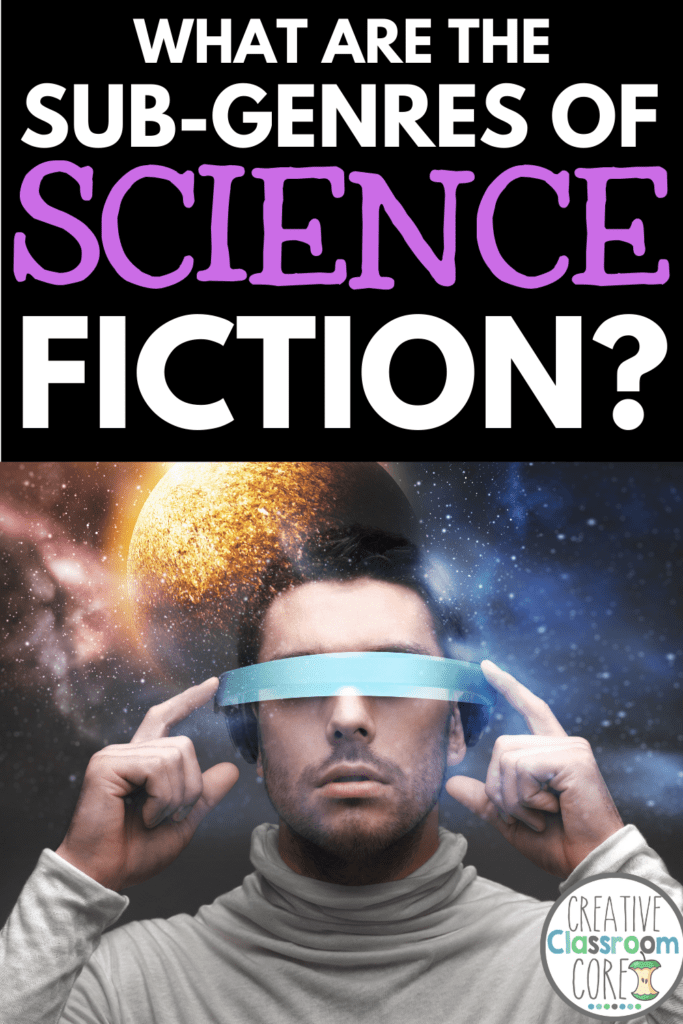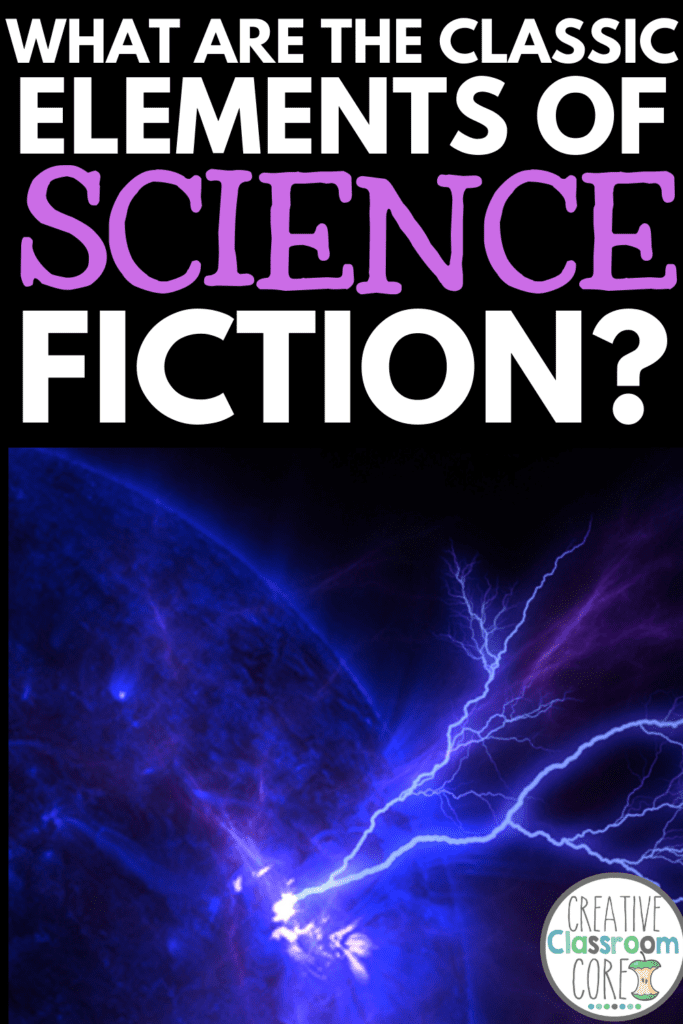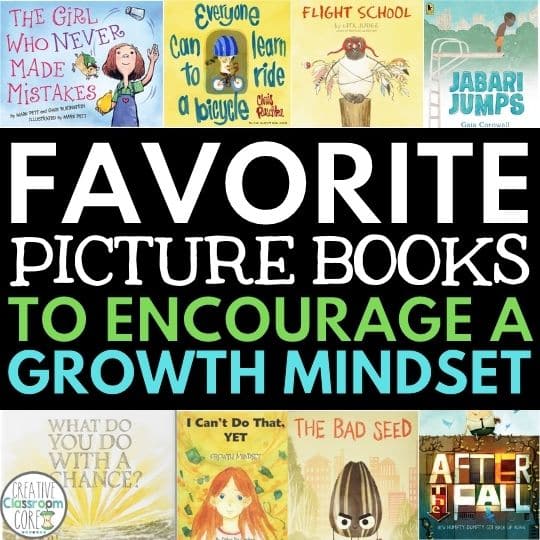What is Science Fiction?
By MARISSA DESPINS Updated April 05, 2024
The science fiction genre is always a hit with my middle school learners. For centuries, humans have been fascinated by extraterrestrials, space travel, and alternate realities. Reading about technology and futuristic societies brings high engagement. Because of this, they are a great way to hook reluctant middle school readers.
Teaching science fiction harnesses the power of imagination. These stories show students that creative ways can be found to solve the problems that dwell in our society. Science fiction motivates students to ask “what if?”. This is an incredibly important question, as it encourages students to anticipate the challenges that may need to be faced in our world in the future. Also, it invites students to anticipate solutions to those problems.
In this post I discuss some of the key elements of this genre. Also, I share some fun ways to introduce these imaginative stories with your learners.
For some no-prep resources that you can download and use with your learners during your next science fiction unit, click on the image or button below!
What is Science Fiction?
Science fiction is a genre of fiction where the stories discuss futuristic science and technology. The plot creates situations different from those of both the present day and the known past. Because of this, the settings and situations often ask readers to suspend their beliefs a bit.
Science Fiction texts often include a human element. They often explain the effect new discoveries, happenings, and scientific developments have on future individuals.
These engaging stories are often set in the future, in space, on a different world, or in a different universe or dimension.
For some great Science Fiction short stories that you can use with the learners in your classroom, check out our post on Science Fiction Favorites!
What Sub Genres is Science Fiction divided into?
The genre of science fiction works as a umbrella. Under the umbrella, several sub-genres can be categorized. Each sub-genre as its own specific characteristics.
Supernatural Fiction
Stories that fit into the supernatural fiction sub-genre focus on hidden abilities of secret knowledge. They can be about things like witchcraft and psychic abilities.
Fantasy Fiction
Stories that fall into the sub-genre of fantasy fiction often include magical elements. They are often inspired by mythology and folklore. J.R.R. Tolkien’s “The Hobbit” and “The Lord of the Rings” series fall into this sub-genre.
Utopian Fiction
These stories are often satirical. They often focus on perfect or ideal societies. “The Island” by Aldous Huxley is a classic example of Utopian Fiction.
Dystopian fiction
This form of fiction focuses on problematic societies, with issues with things like oppression, government, or poverty. Dystopian Societies often appear Utopic at the start. “The Hunger Games” by Suzanne Collins or “The Giver” by Lois Lowry fall into the Dystopian Fiction category.
For more information on Dystopian Fiction, check out our complete guide!
Steam Punk
Stories that fall into the sub-genre of Steam Punk Fiction incorporate steam-powered machinery blended with technological elements. “The Curious Case of the Clockwork Man” by Mark Hodder fits into this category.
Cyber Punk
These stories focus on a less advanced, broken down society, juxtaposed with advanced technology. A book example of this sub-genre is “Snow Crash” by Neal Stephenson.
Space Western
These science fiction stories blend the Western and Science Fiction genres. The movie “Cowboys Vs. Aliens” is a perfect example of this sub-genre.
Space Opera
Similar to a “Soap Opera”, these stories take Sci Fi elements and blend them with topics focused on relationships, romance, and adventure.
What are the Classic Elements of the Science Fiction Genre?
Some of the classic elements of this genre include:
- Super intelligent technology, such as robots and computers
- Time travel
- Space travel and exploration
- Telepathy, telekinesis, and mind control
- Teleportation
- Aliens, mutants, and extra-terrestrial life forms
- Interplanetary war
- Parallel universes
- Fictional worlds
- Speculative technology
How can I Introduce the Science Fiction Genre to my Learners?
To introduce this engaging genre with my learners, I first start by having students take notes on some of the key elements and sub genres. This way, students are able to pick out these characteristics as we examine different sci fi stories and novels in class.
I have students keep their notes inside their short story notebooks, so they can refer back to them as we move through the unit.
After, I pass students out a list of different science fiction short stories. I encourage students to choose a few different titles, and make notes about some of the key elements of the genre that they notice. When done, we share our discoveries with the class.
At the end of the unit, I send students over to the Daily Science Fiction site and let them choose some of their own stories to analyze. This is a great way to introduce students to engaging new stories. Also, it is great practice for picking up key characteristics of the genre. I like that this activity gives students some voice in choice over the stories they choose to read.
Interested in snagging a copy of this science fiction resource?
Pop on over to my TPT shop by clicking here or on the image below.
For more great short stories to use with your learners, check out our posts on favorite short stories, diverse and inclusive short stories, and favorite dystopic short stories!
Interested in signing up for my email list?
If you are interested in signing up for my email list, you can do so by clicking on the link below. I periodically send out emails with free resources, teaching tips, and exclusive deals. Signing up will also give you immediate access to some of my best selling Interactive Notebook resources – foldable activities, graphic organizers, and other fun activities.












